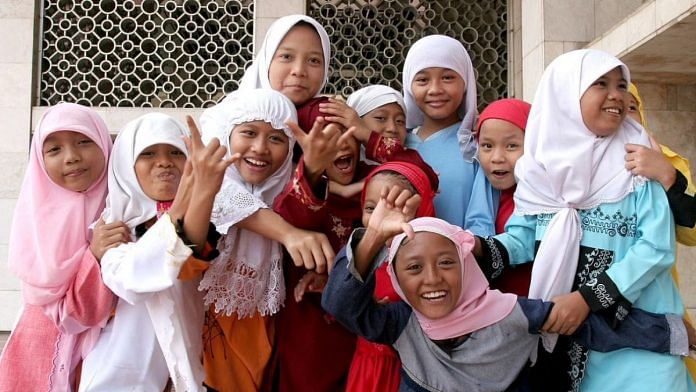Indonesians buy 1.02 billion hijabs per year, spending roughly $6.09 billion, according to industry leaders. But only 25% of the hijabs bought by Indonesians are produced locally, which is a missed opportunity for the economy. If the entire hijab market were produced locally, the effect on Indonesia’s economy would be significant. Globally, spending on “modest fashion” – as hijabs and other Islamic-inspired fashion are sometimes called – increased by 5.7 per cent in 2021, up from $279 billion to $295 billion. The sector is expected to grow a further 6 per cent this year, reaching $313 billion.
ZM Zaskia Mecca (ZM), is an Indonesian business established in 2016 with headquarters in trendy South Jakarta. Over the years they have built a large following, selling up to 70,000 pieces per month at an average price of $5.97. They produce their goods locally, using a hybrid system of cloud manufacturing and conventional factory production. This enables them to keep production costs low, while also being flexible and scalable, and has enabled ZM to grow rapidly while also producing good quality products.
Hijab manufacturing and the Indonesian economy
The hijab manufacturer Pak Iyus is based in Bandung, 150km from ZM’s headquarters. Pak Iyus built a cloud manufacturing system, modeled and adapted from other similar systems from China and Vietnam. It has enabled him to keep pace with demand: at the height of his business between 2015 and 2017, he was able to produce 150,000 garments per day. His workshop has enabled ZM and other local fashion brands to focus on marketing and design, while outsourcing production to cloud manufacturing systems.
Although hijab production is simple, it involves multiple steps including cutting, sewing, labeling and packing. To reduce costs, Pak Iyus breaks down the process into high intensity yet easy labor, and more highly-skilled labor. He outsources the low skilled work into the community, while the high skilled work is done in the factory. Once the products are prepared at the factory, Pak Iyus sends the goods to a fulfillment company. In this way, the $2.39 that he receives per product makes an impact on the wider neighbourhood.



